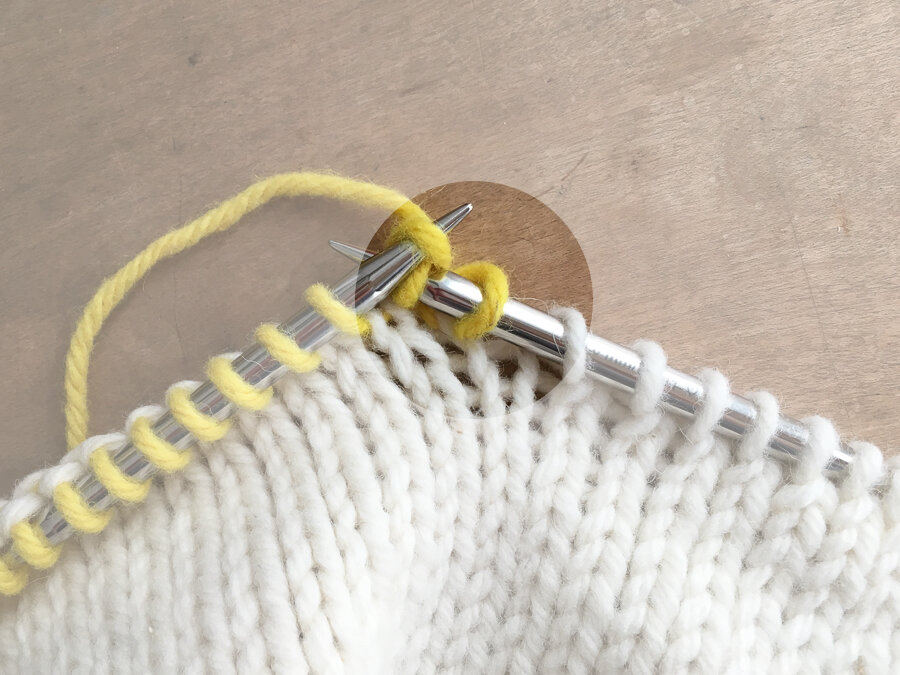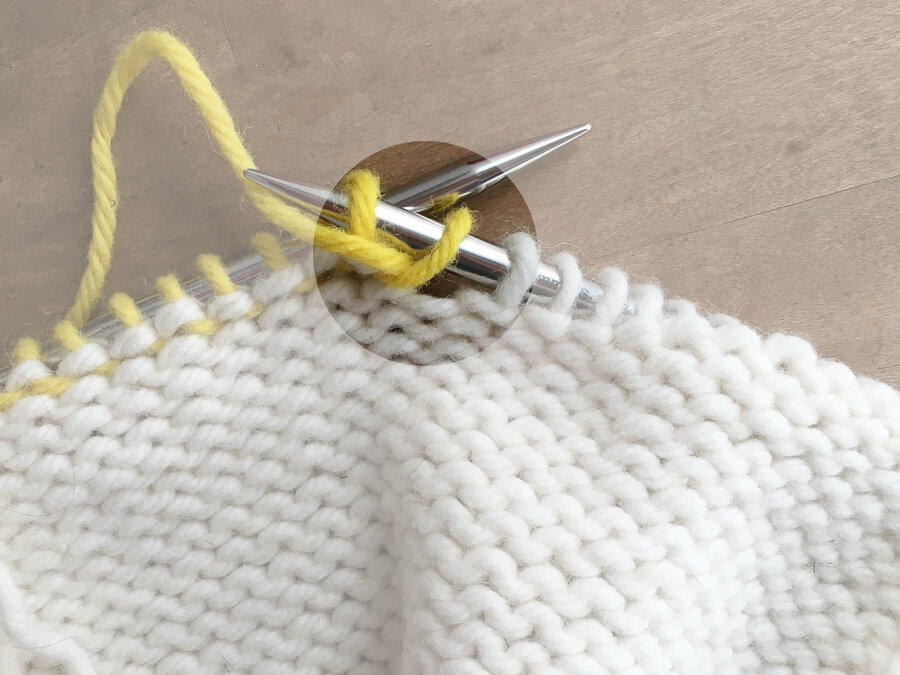Short Rows - Yarnover Method
This blog post is the second in a series of three excerpted from an article I wrote for Interweave Knits in 2004. Part 1 can be found here and part 3 will follow this week.In the yarnover method, the turning yarn is positioned on the needle when the work is turned, and is in place to work together with the next stitch (and hide the hole) on the next row. The turning yarn may be loose for some knitters, but the resulting hole is much easier to eliminate. Work the required number of stitches to the turning point (knit if a right-side row; purl if a wrong-side row), turn the work, and make a yarnover. To account for the fact that the amount of yarn required to make a yarnover depends on the type of stitch that follows it, work a typical yarnover if the knit side is facing; work a yarn forward if the purl side is facing as follows: Knit side facing: Bring the yarn forward, over the top of the needle, then to the back of the work (Figure 1).
Knit side facing: Bring the yarn forward, over the top of the needle, then to the back of the work (Figure 1). Purl side facing: Hold the yarn in back, insert the tip of the right needle into the next stitch, bring the yarn over the top of the right needle (yarn forward), and purl the first stitch (Figure 2). The stitch mount of the yarn forward will be backward (leading leg in back of the needle) and will need to be corrected before it is worked on a subsequent row. When it comes time to close the gap on a subsequent row, work the yarnover together with the nearest unworked stitch, depending on whether the knit or purl side is facing as follows:Knit stitch follows: Correct the mount of the yarnover (leading leg on front of needle), then knit the yarnover together with the unworked stitch (k2tog).Purl stitch follows: Slip the yarnover knitwise, slip the unworked stitch knitwise, return both stitches to the left needle (leading legs in back of the needle), and purl them together through their back loops (ssp). Note that these instructions are for working stockinette stitch back and forth in rows. If you want to use the yarnover method of working short rows in texture patterns or in pieces worked in the round, see below for ways to close the gaps.
Purl side facing: Hold the yarn in back, insert the tip of the right needle into the next stitch, bring the yarn over the top of the right needle (yarn forward), and purl the first stitch (Figure 2). The stitch mount of the yarn forward will be backward (leading leg in back of the needle) and will need to be corrected before it is worked on a subsequent row. When it comes time to close the gap on a subsequent row, work the yarnover together with the nearest unworked stitch, depending on whether the knit or purl side is facing as follows:Knit stitch follows: Correct the mount of the yarnover (leading leg on front of needle), then knit the yarnover together with the unworked stitch (k2tog).Purl stitch follows: Slip the yarnover knitwise, slip the unworked stitch knitwise, return both stitches to the left needle (leading legs in back of the needle), and purl them together through their back loops (ssp). Note that these instructions are for working stockinette stitch back and forth in rows. If you want to use the yarnover method of working short rows in texture patterns or in pieces worked in the round, see below for ways to close the gaps.
Closing the Yarnover Gap
Depending on the stitch pattern used and whether you’re working back and forth in rows or in rounds, the yarnover may occur before or after the gap made at the turning point, and the nearest unworked stitch may be a knit or a purl. For a truly invisible transition, work the yarnover together with the unworked stitch as follows, depending on your particular situation.Gap follows yarnover: Work to the yarnover, then proceed as follows:
- Wrong (purl) side facing; knit stitch follows: K2tog.
- Right (knit) side facing; knit stitch follows: Ssk.
- Wrong side facing; purl stitch follows: P2tog.
- Right side facing; purl stitch follows: Ssp.
Gap precedes yarnover: Work to one stitch before the gap, then proceed as follows:
- Right side facing; knit stitch follows: Ssk.
- Wrong side facing, knit stitch follows: K2tog.
- Right side facing, purl stitch follows: Ssp.
- Wrong side facing; purl stitch follows: P2tog.
